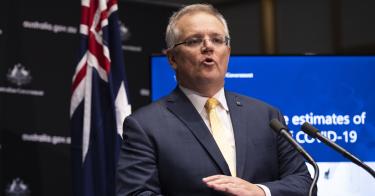Australia and New Zealand are two of just six economically free countries in the world, according to The Heritage Foundation’s 2020 Index of Economic Freedom, but they have chosen dramatically different paths in dealing with the coronavirus health crisis.
Australia has been far more mindful of the economic freedom of its people.
Both nations have done well in combating the COVID-19 pandemic that has been unleashed on the world. The number of cases and deaths from the virus per million of their populations are low compared with many countries, and the spread of the virus has been well-mitigated.
During the pandemic, Australia has been cautious not to infringe on economic freedom when it doesn’t have to, allowing schools to decide to remain open, for example, and allowing many businesses to operate, including mining, construction, and restaurants for takeout.
New Zealand’s economic lockdown, by contrast, has been severe—stopping virtually all businesses from operating until very recently, slightly loosening some restrictions, but still not allowing businesses to interact with customers.
As a result, Australia and New Zealand face very different economic horizons ahead of them.
As was recently discussed in The Wall Street Journal:
Economists expect New Zealand’s economy to contract by more than 20% in the three months through June, compared with the quarter immediately prior, whereas Australia’s economy is expected to shrink some 13% over the same period.
‘This reflects the fact that [New Zealand’s] lockdown is very strict. We also see quite a protracted recovery here,’ said Elizabeth Kendall, an economist with Australia & New Zealand Banking Group Ltd. in New Zealand.
The banking group expects New Zealand’s economy to be 10.4% smaller at the end of 2020 than it was at the start of the calendar year. For Australia, that contraction is forecast at 4.7%.
New Zealand’s jobless rate may rise to 13.5% from 4% at the end of last year, according to government forecasts. Australia’s central bank has forecast the country’s unemployment rate will roughly double to 10% by June.
Australia’s economic outlook is only about half as bad as New Zealand’s because key industries there have remained operating during the COVID-19 pandemic, and Australians have retained much of the economic freedom that New Zealand’s government has, at least temporarily, taken away.
The contrasting responses to the pandemic of Australia and New Zealand and their impact on the overall economic health of the two countries have important implications for America, particularly as we approach critical decisions about reopening the U.S. economy.
As a recent Heritage Foundation report pointedly noted:
Policymakers need to consider these costs and the public health costs of severe economic reverses when determining the breadth and duration of public health-motivated shutdown orders or lesser restrictions.
This piece originally appeared in The Daily Signal




